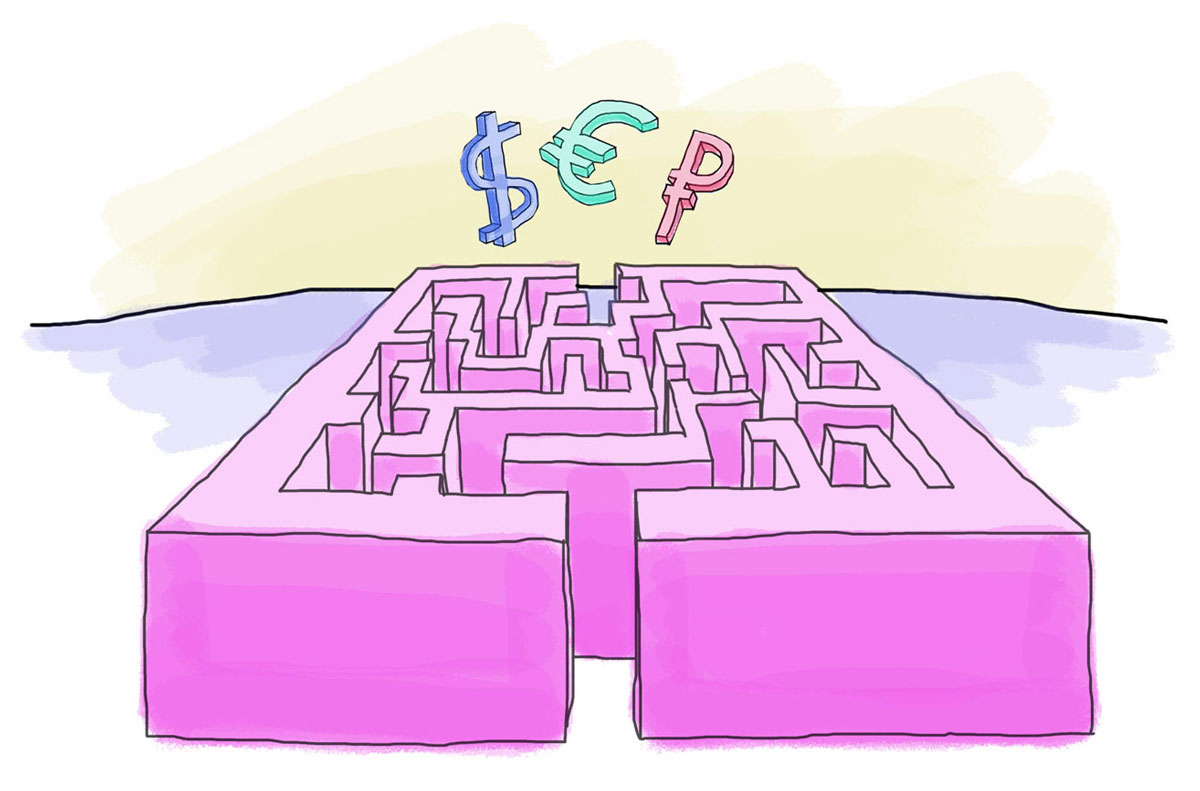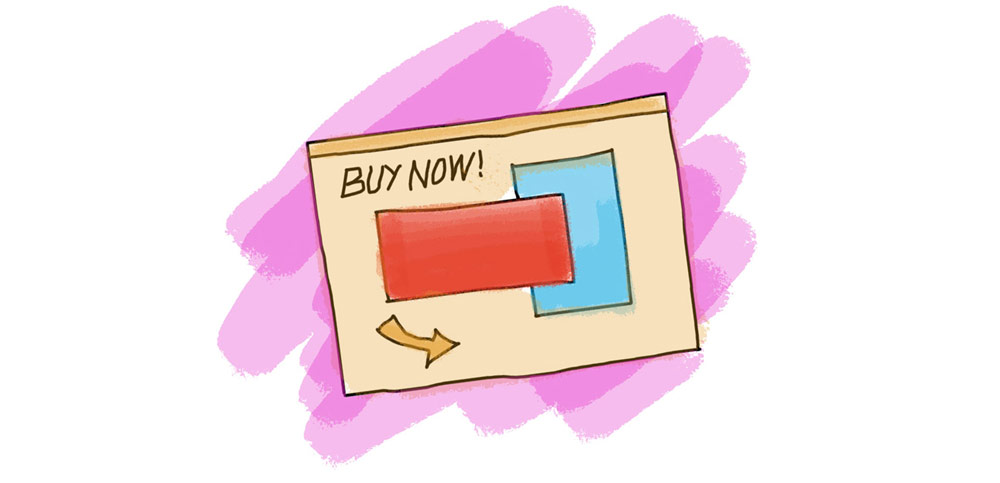
Conversion Optimization & UI/UX
One of the most important things to understand about creating a profitable PPC campaign is that success doesn’t just depend on the campaign. There are a lot of factors in play. One of the most crucial is knowing how to convert visitors once they visit your site.
You can have the best Google Ads campaign in the world, but if your site sucks, you won’t make any profit.
We’ll take a brief look at various aspects of your website which need to be addressed in order to see great results from PPC.
5.1 Landing pages
If you’ve spent any amount of time in the online marketing world, you’ve doubtless heard a lot about landing pages. But don’t believe everything you read online. One of the most common myths, usually perpetuated by inbound marketing companies & landing page generators, is that you need to have a separate page for each targeted keyword in order to get high engagement and sales. Some people even tell you to create new websites with new domains. But this is an outdated strategy and won’t help your sales. Why? Because Google calls these Doorway pages and they are against Google’s policies.
In the world of inbound marketing, a landing page is created for a singular purpose: gaining a conversion. There is usually a simple, clear CTA (call-to-action) which directs users to an action like downloading something or submitting a form. These pages are usually ridiculous. They’re not made to add value for users. The only purpose is to create a high-pressure sales environment that encourages the user to BUY NOW a thousand times. This funnel-loading tactic discourages careful research, and tries to prevent users from leaving to find some other better product. Often, they’ll even use mouseover scripts to sense when a user is leaving a page, and then flash a last-minute popup to try to retain a user.

Not all landing pages are evil, of course. But the best landing pages are the ones that aren’t there to sell, but to create a good experience for the audience. Google prioritizes pages that provide real value to a user: either by being educational, entertaining, informative, or useful in some manner.
A landing page, also known as a destination page, is the page through which the user enters your website. As simple as that. You can even see all the landing pages in a Google Analytics report: just go to Behaviour > Site Content > Landing Pages
It’s an important part of your campaign because
- It’s the second thing the user sees after he clicks on the ad. The user will decide if he trusts you within the first 2 seconds he lands on the page. The initial first impression will determine in his mind if you’re professional and if he’s ready to work with you and buy your services or products.
- The landing page experience is part of Quality Score (for channels like Google Ads). This means that the higher the score is, the lower your CPC (cost-per-click) will be. A good landing page experience is directly correlated with how useful & relevant the user finds the page (some of the metrics to look at are bounce rate and average session duration).
So what makes a successful landing page?
- Good design
- Fast load speed
- Mobile-friendly responsive HTML
- Easy-to-read and informative content
- Nice pictures (professional quality)
- An easy way of buying or signing up for something
The more you care about good design and good content, the lower your marketing costs will be…and as a bonus, you’ll have a higher conversion rate.
For one of our clients, we A/B tested their existing homepage design with a new & improved design. You can read more about it at our case study: How We Improved Homepage Conversions by 28.6% through A/B Testing. The results were amazing. In just 2 weeks the following metrics were improved:
- The conversion rate for the new home page was 28.6% higher than the old one
- The bounce rate was 19.8% lower
- Time on page was 6% higher
- Users were 15.4% more likely to click on the CTA (call-to-action) on the top banner
So what makes a good design?
5.2 Friendly Design and Interface
Good design is essential for your website. Good design is not subjective: there are clear factors that go into a good vs. bad design. It’s not enough to just use a modern template. A great website requires all aspects of design to work together in a cohesive manner.
Clean, simple layout. Minimalism isn’t just a fad. It’s an intentional design choice that removes the distractions of a cluttered design in order to place an emphasis on the most important parts. Using appropriate amounts of negative space is not a waste: by isolating the most important elements, you’re drawing the eye of the user where the most important content is. Make it simple for the user to understand where they need to click next. Offering a dozen options isn’t good: it’s better to have one or two buttons.
Consistent branding & color choice. Every part of your website should look like it belongs to your brand. That means using the same font, colors, styling, and design language throughout the entire site. If your company already has an established branding guide, you can use this consistently throughout your site. If not, spend some time developing your “look & feel”. Look and feel is one of the most underrated aspects of a brand. While many are quick to dismiss it as trivial, it’s an unavoidable part of the success of a website. A website that even looks a couple years old and has an outdated feel has already lost a level of trust within the first few seconds of the user visiting the page.
Voice & messaging. What attitude does your brand have? Whether it’s playful, formal, professional, funny, or sarcastic is up to you. But it needs to be consistent, and this shows in things like your call-to-actions, page headings, content, colors, and design. For example, if you’re a medical consultant, you probably don’t want to have a sarcastic tone. You want to convey utmost trust and professionalism, so you pick strong colors like blue and white, you write clear and formal English, you avoid using too many exclamation points, and choose professional photography. However, if you’re a skateboard shop, choosing the formal tone of the medical consultant would be a disaster. You can be irreverent, sarcastic, and edgy. Choose black and red colors, grungy fonts, abstract street photography, and use all the slang you want.
Photography. Professional photography is essential for the most engaging websites. Just using a 24-megapixel camera doesn’t make your photography good: make sure that you’ve got a high level of quality throughout your images. Composition, lighting, clarity, and presentation is of the utmost importance.
5.3 Conversion Optimization
Conversion optimization could have an entire chapter to itself, but it can essentially be boiled down into one simple statement: make it easy.
Everything should be easy and effortless for the customer. Easy to learn about the product, easy to navigate, easy to convert, easy to pay.
Essentially, the more steps you add in between the user first seeing your ad and your final conversion goal, the less likely the user will be to follow through. So keep it simple. Here are some tips to keep in mind:
- Make the call-to-action prominent and clear
- Show plenty of information and images about your product
- Make sure your benefits are clearly shown (free shipping, guarantees, etc)
- Make your conversion goal easy to see (simple, straightforward buttons or forms)
- Offer multiple payment methods (both credit cards and PayPal, for example)
- Make sure your site is very fast.
- Make sure your site works on all devices.
Does site speed affect conversion? The answer: absolutely. Approximately every additional second that a site takes to load can result in up to a 7% reduction in conversions. Numbers vary widely according to your niche and your platform, but you should aim for a page load speed of under 2 seconds.
Walmart decided their site wasn’t fast enough. They found out that for every 1 second of improvement they experienced up to 2% increase in conversions. For every 100 ms of improvement, they grew incremental revenue by up to 1%.¹
Next? How to continually optimize your campaigns in order to see better results over time.
